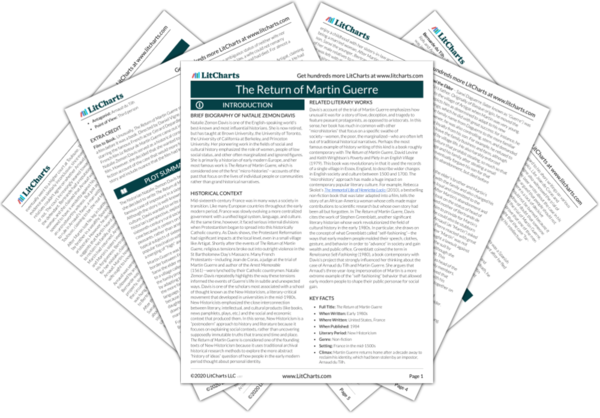After Martin Guerre fled his home village, he served in the Spanish military and lost his leg while fighting against his native country, France. The wooden leg that replaced Martin’s lost leg ironically came to mark him as the “real” Martin. In an era before many of the modern markers of identity—birth certificates, passports, photographs—it was very difficult to prove which man was the real Martin and which was the impostor Arnaud du Tilh, who had assumed Martin’s identity in his absence. When Martin returned to Artigat to claim that he was the true Martin Guerre, the wooden leg provided clear and incontrovertible evidence that he was who he said who he was, since multiple eyewitness accounts confirmed that Martin now walked with a wooden leg. In this sense, the wooden leg symbolizes Martin’s real identity—it demonstrated the truth of who Martin was when that identity was under threat. Since Martin’s friends, family, and neighbors hadn’t seen him for more than a decade, the witnesses in the trial of Arnaud du Tilh couldn’t agree on whether Martin was tall or short, thin or fat, or whether he had certain identifying marks on his body. The wooden leg, however, provided firm proof of the real Martin’s identity. In this sense, Davis suggests that identity is constituted by external markers. In the case of Martin Guerre, identity was not inherent or intrinsic to a person—which is how people usually think about identity. Rather, it had to be proven by outward signs like Martin’s wooden leg.
Martin’s Wooden Leg Quotes in The Return of Martin Guerre
Montaigne insists how difficult it is to know the truth about things and how uncertain an instrument is human reason. “Truth and falsehood have both alike countenances…Wee beholde them with one same eye.”










